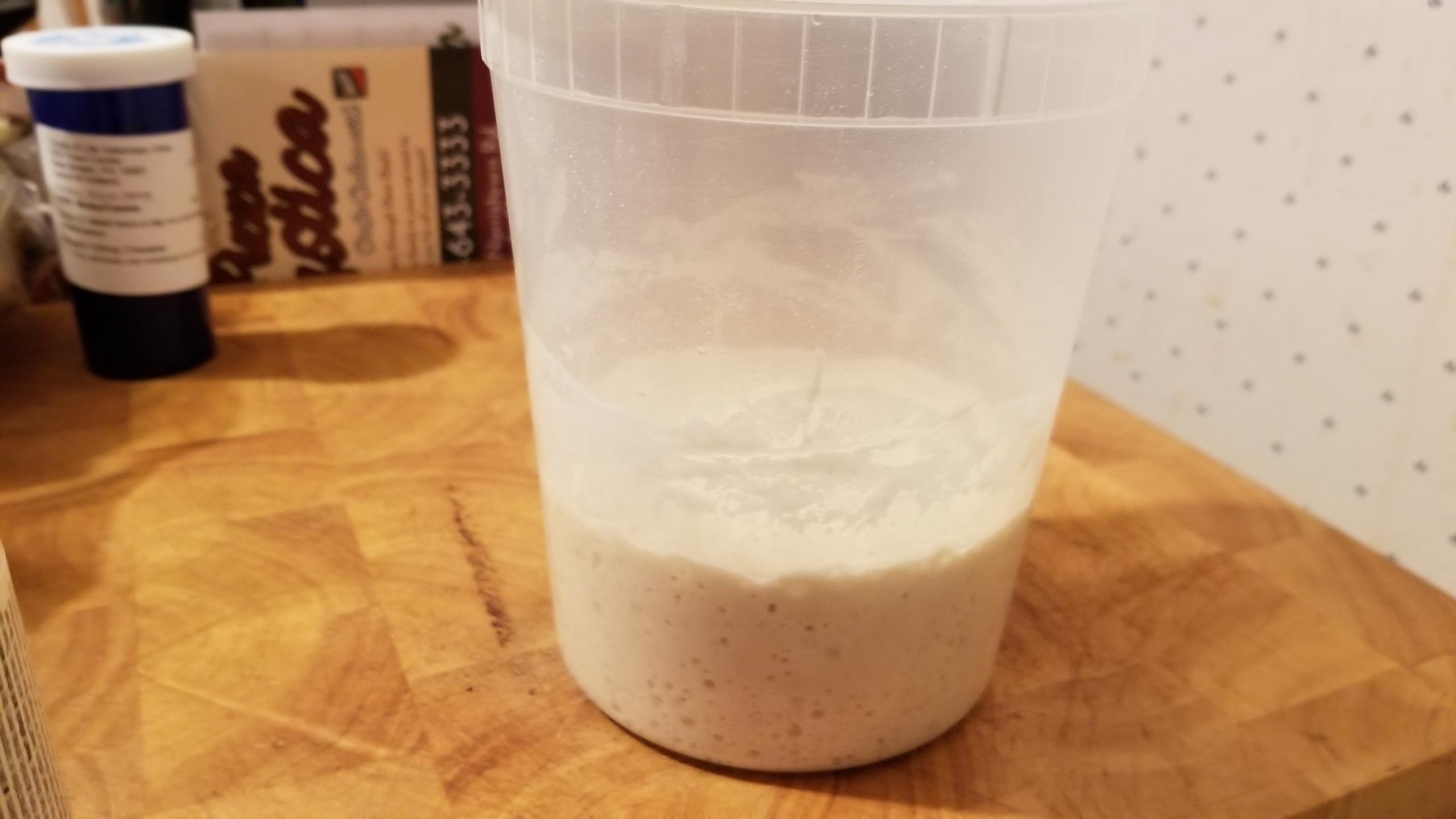
Poolish is terribly inconsistent

Hi new forum member here. I could really use some advice. I've just started using a poolish in the past 2 weeks and every time I make one I get a different result. Out of the last six times I've made one, only two actually doubled in size or more. Two never rose at all, and two made a valiant effort but basically went nowhere (only as little bubbling) before collapsing. (The photo was overnight after 12 hours, and stayed the same thru the day.)
I opened a fresh package of SAF instant yeast, and I make it identically every time, 100g flour, 100g water and 1/16 tsp of instant yeast. I let it sit for 12 to 16 hours, and a little more if I didn't see any result. Always room temperature filtered water. I have no idea WTF I could be doing that makes this work sometimes but not others. And the room temp is at a steady 70°. Any ideas?? thanks in advance.


Hi
Are you blooming your yeast before mixing poolish? Blooming instant yeast means combining yeast with 66-70F water and dispersing it thoroughly with a whisk or immersion blender, so it dissolves into individual cells. Only later you add flour and mix it thoroughly, giving it at least 300 turns with a whisk or fork, if the amount of poolish is that small.
And what is your water temperature? 70F as well?
From King Arthur Baking: To make the poolish: Combine the flour, water, and yeast. Cover the container and allow to rest for 12 to 16 hours at room temperature. When the poolish is ready to use, it will be doubled in size, and filled with large bubbles
Usually I use just a pinch of instant yeast. Or 1 tbsp sourdough.
this might help:
https://www.weekendbakery.com/posts/more-artisan-bread-baking-tips-poolish-biga/
Yes I've just been using a pinch, but I also tried the float test on the last batch, it floated, which i guess means it is still "alive" - and it smelled good too, so I used it anyway and it turned out fine. I've also been leaving it for a couple extra hours as it tends to be on the cool side here at night.
Thanks for the reply!
No I have not been blooming the yeast - but your method sounds interesting and I will give it a try. My water is room temp, so yes, 70 degrees.
Blooming instant yeast in 70F water is a method from Modernist Bread encyclopedia, they recommend it whenever we use instant yeast. I usually use ADY, so I bloom mine in a 105F water. Giving soft dough 300 turns with spoon or fork to mix to homogeneity and introduce the maximum amount of air bubbles into it, so it rises better, is an old method, from the beginning of the 20th century, when all mixing and kneading was done by hand.
I read that you use a pinch of yeast. Is it a pinch or an actual 1/16 tsp of yeast? Maybe your amount of yeast is inconsistent, varies from batch to batch as well? It will make a huge difference even at the level of a fraction of gram of instant yeast in such a small amount of poolish because 1/8 tsp of instant yeast is 0.38g of yeast and 1/16 tsp is 0.19g of yeast .
Maybe you could invest in a precise scale, like Escali Pico, or in a very precise measuring spoons with exact 1/16tsp included. Cuisipro is the most precise ones according to testing done by Cook's Illustrated.
SAF recommend to rehydrate at 95-105F, so I'm not sure where Modernist Bread are getting their 70F temperature from, but I guess they like to do their own thing.
Here is a useful document from SAF on using instant yeast.
But I agree with Mariana that It's best to weigh the yeast. 0.01g resolution scales are so cheap now that there's no reason for a baker not to have one.
Lance
Hi Lance,
Modernist Bread recommends blooming yeast in even much colder milk, if milk is used in the recipe. Straight from the fridge! I nearly had a heart attack when i read about it. But then I never bloom yeast, I usually rehydrate it.
I think hey do it at such low temps because blooming is not rehydration. It is merely a forceful dispersion of yeast in liquid, like we would disperse salt or sugar crystals. It takes seconds. Right after that we add flour to the liquid with the bloomed yeast. And then yeast cells begin to rehydrate and are reactivated in a safe environment. The osmotic pressure is there and they won't leak their cell content through their still porous membrane.
Rehydration is restoring dry cell membranes, it takes longer and it is combined witn reactivation, basically it means restoring cells to the compressed or liquid yeast state with maximum gassing power. It takes at least 10 -15 min at optimal temp to rehydrate yeast cells in water or milk and somewhat longer - to reactivate them. It is different from a mere blooming of yeast.
How much in grams is 1/16 tbsp?
I make my poolish the same way 100g flour/100g water, but i use all of yeast for the recipe[i bake big bread from 1kg flour, so i add 10g of fresh yeast, that's circa 3,3g of instant yeast and 4,5g of dried yeast. It basically doubles in an hour.
Something must be off with your yeast procedure. Instant yeast should not need activation, only dried yeast need activation. Do you use cake flour? Cake flour dont like high hydration and long fermentation times, since it has weak gluten that will be attacked by acid from longer fermentation. The high hydration also doesnt help such weak gluten.